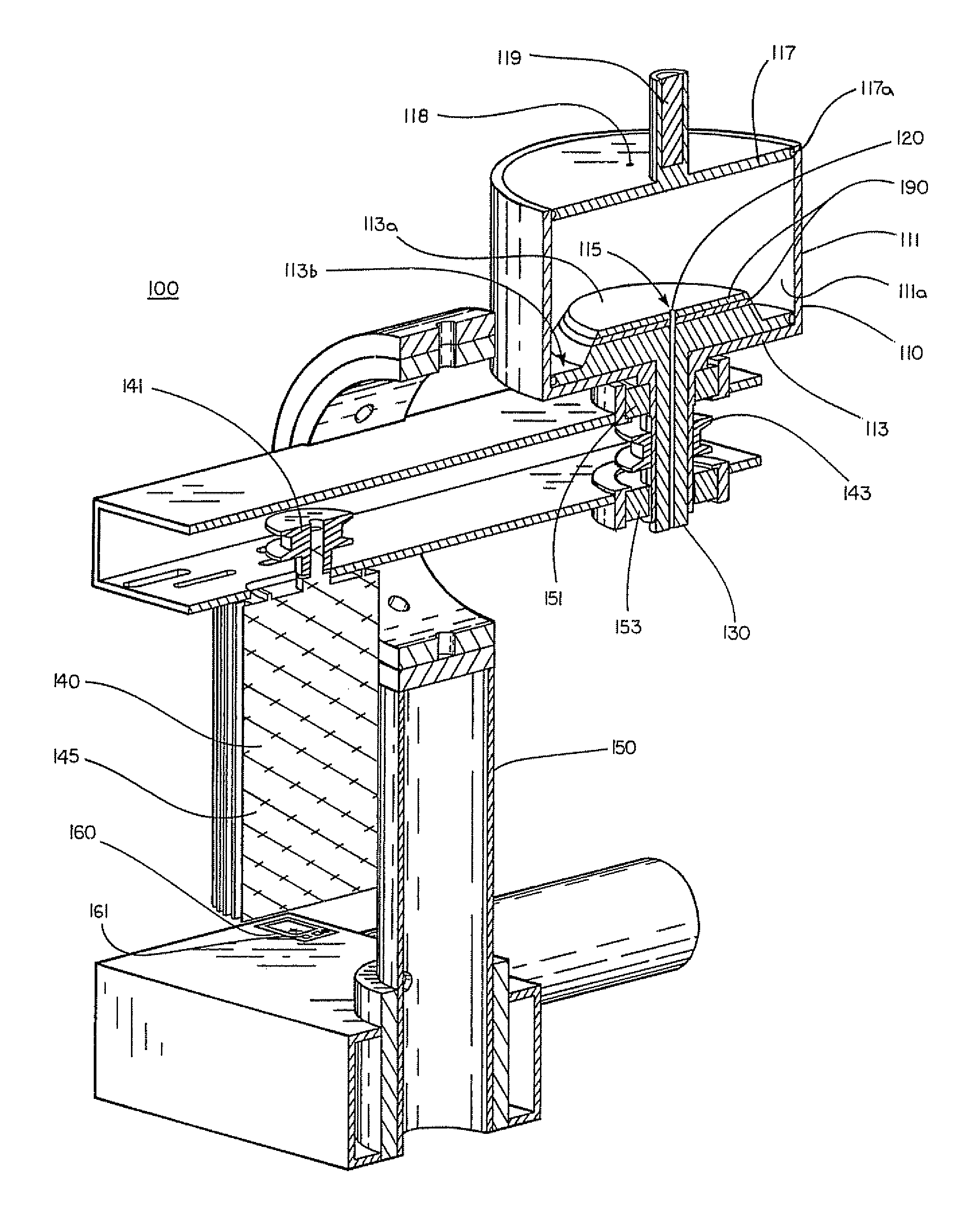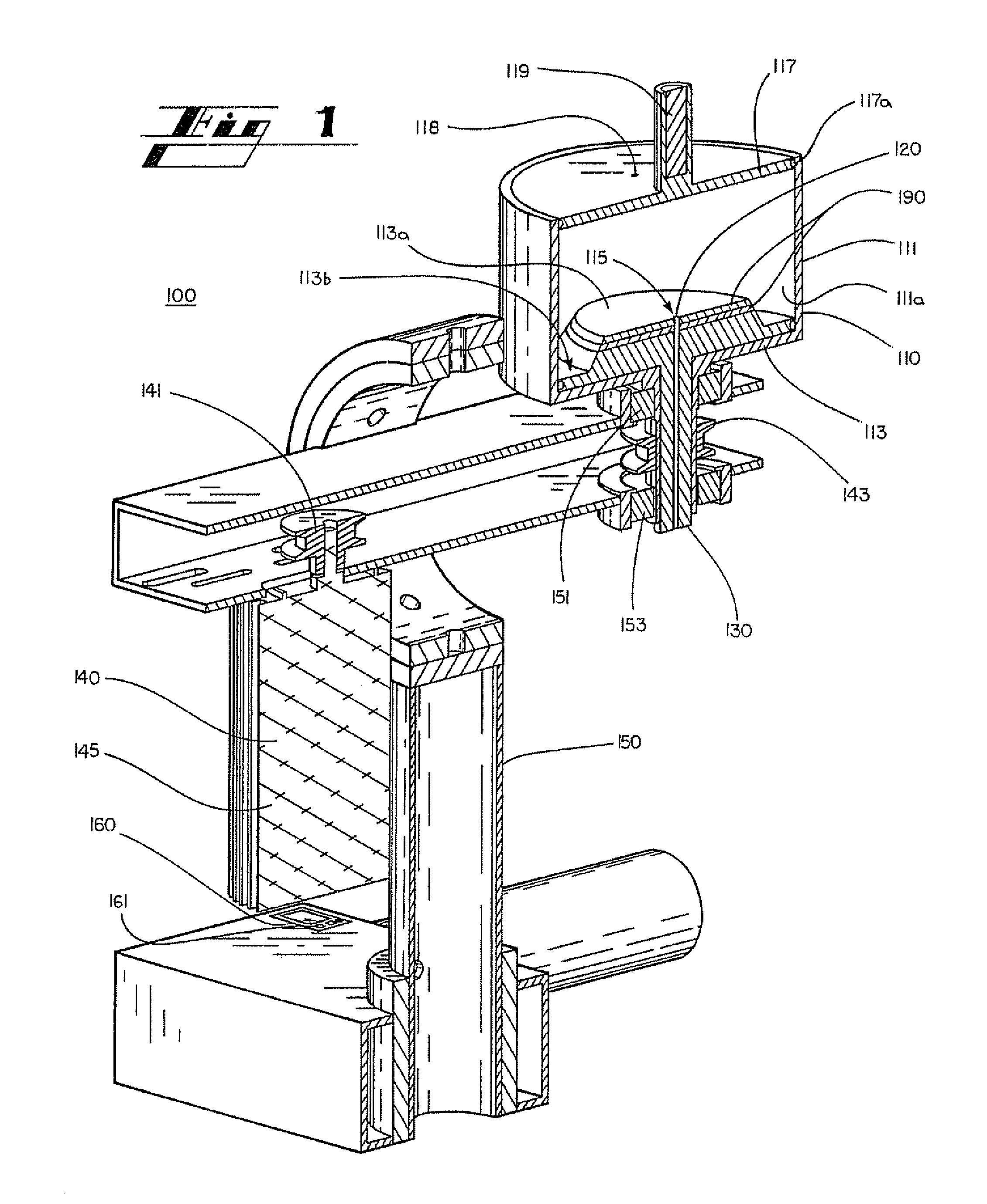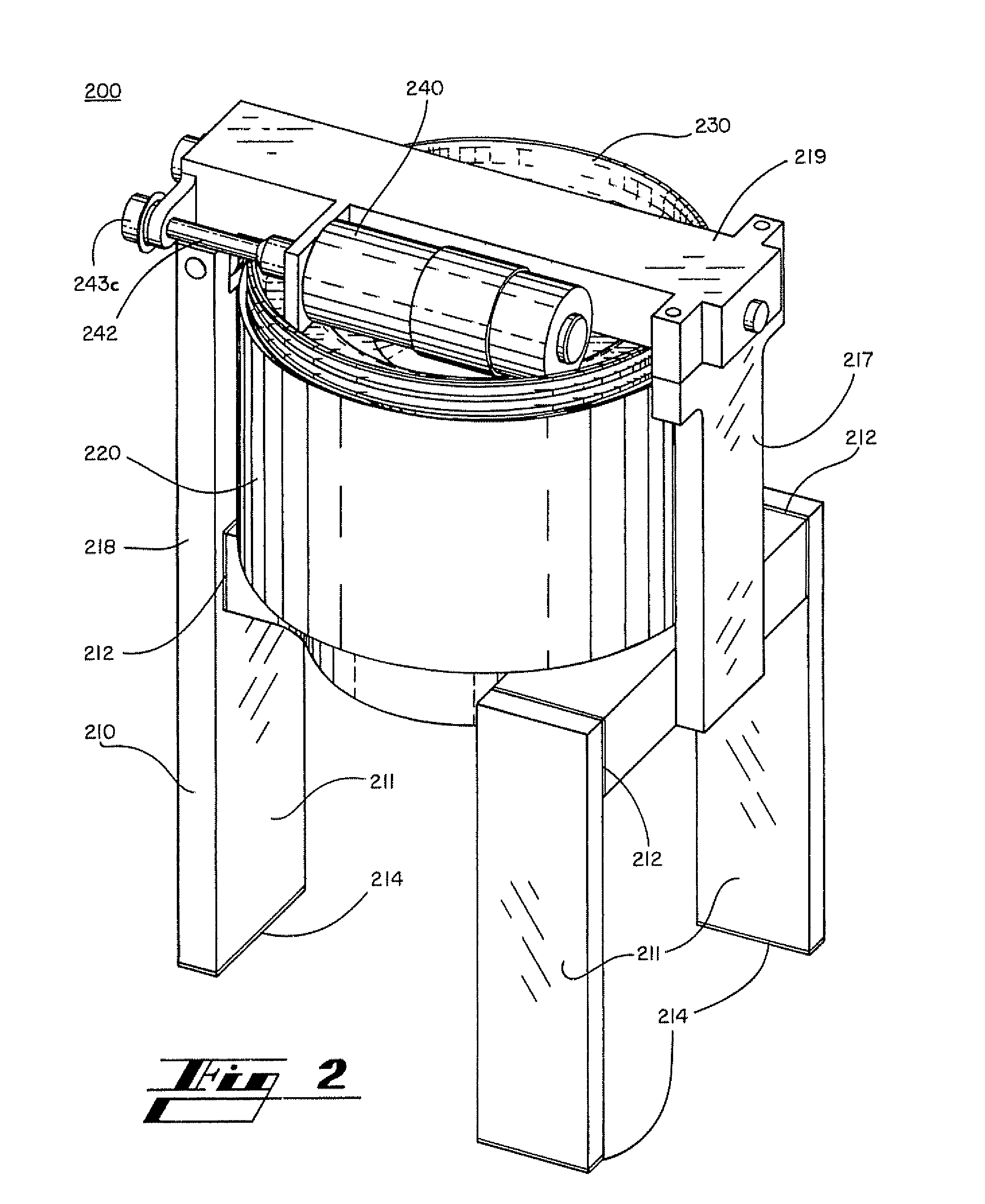System and method for brewing beverages
a beverage system and beverage technology, applied in beverage vessels, household applications, kitchen equipment, etc., can solve the problems of reducing affecting the taste, and the detriment of mechanical separation of particulate matter, so as to reduce the amount of particulate matter needed, reduce the brewing time, and reduce the amount of brewing time
- Summary
- Abstract
- Description
- Claims
- Application Information
AI Technical Summary
Benefits of technology
Problems solved by technology
Method used
Image
Examples
Embodiment Construction
[0025]In describing embodiments of the present system illustrated in the Figures, specific terminology is employed for the sake of clarity. The claimed invention, however, is not intended to be limited to the specific terminology so selected, and it is to be understood that each specific element includes all technical equivalents that operate in a similar manner to accomplish a similar purpose.
[0026]In the embodiment chosen for purposes of illustration in FIG. 1, system 100 includes brewing chamber 110, valve 120, spout 130, motor 140, and housing 150. As shown, brewing chamber 110 preferably includes circular side wall 111 and bottom wall 113 sealingly attached to a lower portion of side wall 111. Bottom wall 113 preferably includes central opening 115 operable with valve 120 to selectively seal opening 115. Plunger 117 is preferably further included and is sealingly engageable with an interior surface 111a of side wall 111 to enclose an upper portion of brewing chamber 110.
[0027]A...
PUM
 Login to View More
Login to View More Abstract
Description
Claims
Application Information
 Login to View More
Login to View More - R&D
- Intellectual Property
- Life Sciences
- Materials
- Tech Scout
- Unparalleled Data Quality
- Higher Quality Content
- 60% Fewer Hallucinations
Browse by: Latest US Patents, China's latest patents, Technical Efficacy Thesaurus, Application Domain, Technology Topic, Popular Technical Reports.
© 2025 PatSnap. All rights reserved.Legal|Privacy policy|Modern Slavery Act Transparency Statement|Sitemap|About US| Contact US: help@patsnap.com



